Fantastic snow-white flowers of hymenoculus with long swirling petals attract attention to their surrealistic look and originality. In addition to surprisingly spectacular inflorescences, the plant looks elegant due to the lush bush of elongated perennial leaves. The cultivation of a bulbous plant, hymenocallese, possibly both in the closed and in the open soil. In this selection of material - all about landing and leaving the garden form of hymenocallas.
Himenokalles, Botanical Plant Description
- Himenokallis is a genus of flower bulbous plants of the Amarillix family. Previously, the family was referred to the family of Lily.
- The historical homeland of decorative culture is tropical and subtropical regions, which directly affected the conditions of cultivation of the flower.
- The hymenocalleis, first of all, is highlighted by unusual large flowers collected in the inflorescence of the shield of 10-15 pieces. Plant flowers have a bizarre form consisting of a belloltoid "crown", surrounded by elegant elongated petals and protruding thin anthers. Surprisingly tender and beautiful flowers, besides, possess a pleasant fragrant aroma. The coloration of the Himenokalle whites is most often white, although there are varieties of pink or yellowish-cream color. Plant blooms in the summer.
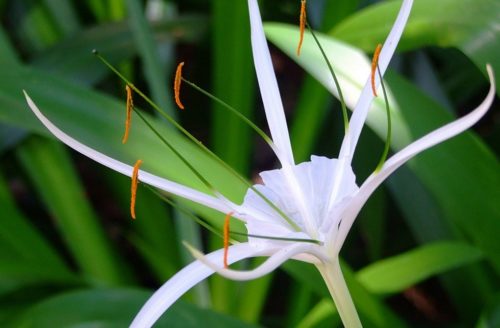
- A characteristic feature of perennials are wide, removal, long leaves with a pointed edge growing in the form of a socket. Thanks to this magnificent green "decoration", the plant looks spectacular even outside the flowering period.
- A bush of a bulbous plant, hymenocallas, with high, up to half a meter, bright green leaves and even longer (up to 70 cm) with flowers, covered with floral buds, looks very picturesque and effectively. Moreover, first, all buds are combined with one shell, when the seating flowers appear separately.
- The root system of perennial is represented by a pear-shaped bulb. The bulb is covered with brilliant scales, like onion. One large (mature) bulb "produces" 2-3 floral arrows.
- The hymenocalleis is considered to be a deciduous plant, therefore, preparing for the cold period, the entire ground part of the plant dries and dies. After that, the flower enters the phase of rest.
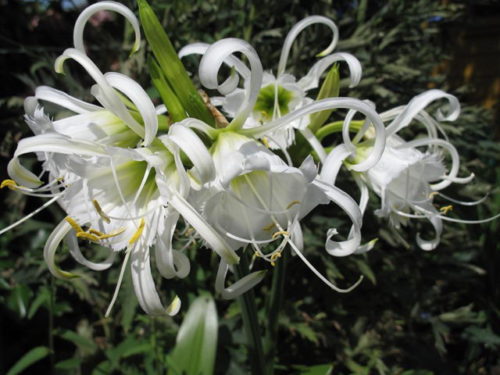
Himenokalles, interesting facts and features
- Unusual and, apparent complex, the name of the plant is literally translated as "Beautiful film". This is due to the bizarre flower shape formed by the base with stamens and resembling an elegant "crown" with thin narrow petals and long anthers.
- Thanks to the non-standard form of a whisk and the natural range of growth, the Gimocalles flower received many beautiful names: "Angel Pipes", "Ismene", "Peruvian Lilia", "Basket of the Bride", "Peruvian Narcissus", "Lily Spider", etc.
- It blooms a long-term loyal in the summer, and the first flowers appear in June and "hold" about 1.5-2.5 weeks. If there are bulbs of different sizes on the flower bed, - bloom will also be phased. First bloom large copies, then smaller. Thus, flower beds with hymenochalles will have stretched flowering dates for about 2 months.
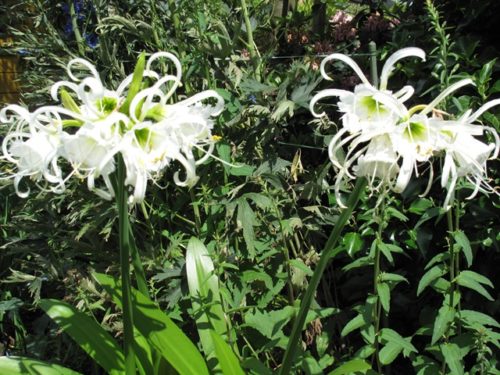
- Interesting is the fact that the fragrance of the blooming hymenochalis is intensified with the occurrence of the evening.
- In the culture of Himenokallis grown as a garden, and as a room (pot) plant. When growing in the open soil, the bulbs for the winter are necessarily digging.
- The hymenocallas plant is considered highly decorative culture, spectacular not only during flowering. Lush emerald green foliage cascades look great and in group landings, and as an individual bright accent. The flower will be appropriate on any flower bed, rocky hill, along the garden path and combined with other flowers.
- According to some data, it is not recommended to grow hymenocallas, people suffering from allergies. Not only perennial flowers, but even bulbs can cause allergic response in such people.
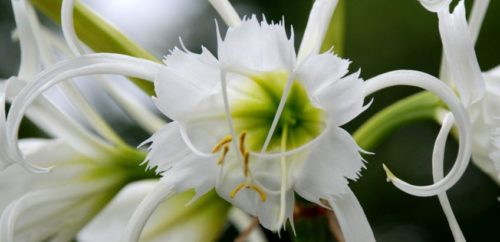
Himenokallis, varieties and varieties
Choosing the grade of hymenocallese for planting in the garden, it is important to initially distinguish the indoor and street varieties of bulbous culture. Not all hymenocallese varieties will be able to grow well in the open soil.
- In Russia, the variety of Early Himmelocalleis is most common (the second name "Himenokallis pleasant" or "Ismemon is pleasant"), grown in the open soil.
- Special popularity of gardeners use a variety of a variety of hymenocalleis baskets.
- Many hybrid hybrid hymenocallese varieties are also popular with a decorative coloring of the bunny and leaves (for example, Variegata variety). Thus, the hybrid view of "Himenokallis festive" is very popular in garden flower growing and is distinguished by snow-white terry flowers with high yellow anthers.
- Himenokalles Narcissocelers is grown as street culture only in southern regions, with a warm soft climate. For convenience, the plant is planted into the open ground right in the flower pot so that with the onset of cold weather it can be easily transferred to the cool room. After the rest period, the pot again exhibit in the garden.
- Such varieties like Himenokallis Caribbean and Himenokalles are beautifully cultivated mainly as indoor plants. Although, recently, breeders have been derived somewhat resistant to the "street" conditions of the vast species of the Caribbean's hymenocaliss.
- Himenokalles Festalis is one of the most common varieties with large snow-white openwork flowers. The hybrid variety is characterized by a strong aroma and high (up to 1 meter) with flowers. Snow white flowers of perennial shade bright orange anthers.
Where to buy hymenocallis?
The bulbs of Himenokallis are most often taken from Holland. As a rule, another name is written on the package, namely "Ismene". On sale the bulbs appear in winter. You can buy a flower in flower shops, including the Internet network.
When buying, you should give preference to the largest, healthy and not damaged bulbs.
Before landing, the bulb must be stored in a cool place, for example, in the refrigerator at a temperature of 5-10 0WITH.
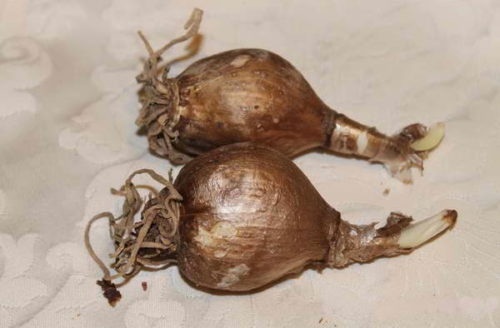
Himenokallis, landing in open ground
The cultivation of hymenocallas - the process is not complicated, but still, requiring knowledge of the most important preferences.
The bulby perennial is warm and a light-affilome plant, needs well-lit, protected from strong winds, place. Also, a slight half-day is also allowed, with scattered sunlight, and even then not all day (and, for example, in his second half).
The second condition for the successful development of hymenocalleis in the garden is the presence of light fertile soil.
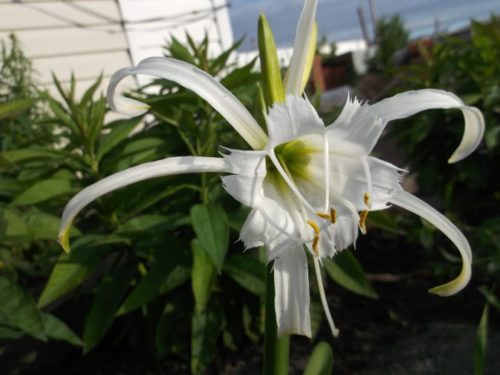
Agrotechnology landing hymenocallisa
- Landing a thermal-loving culture, Himenokalles is held in the second half of spring, about May month, when warm weather is fully installed, and the soil has already warmed well. In the middle lane of Russia and regions, where the risk of return freezers is still high, a flowerbed with planted plants is covered with film or cardboard boxes. The first leaves appear after a month and negatively react to sudden temperature differences.
- When landing, manure or humus is better not to make, since bulbous cultures negatively relate to the overaffect in the soil of organic fertilizers. It is possible to easily help the site by organichek in advance, with a peopling of flower beds.
- Immediately before landing prepare landing place. For this, the primer can enrich mineral fertilizers, and a thin layer of river sand is poured on the bottom of the landing pit. Sand serves as a peculiar drainage and protects the dont of the bulbs from rotting.
- Himmecallis flower is planted into open soil bulbs that are plugged into the soil shallow (above their tops there should be a 3-5-cm layer of the Earth).
- The distance between the plants in the row varies, depending on the size of the bulbs. Thus, there are 40-60 cm between large copies of the hymenochalis, and there will be 15-20 cm between small - it is enough.
Do I need to grow hymenocallece garden and when to do it?
- The Bulb of Himenokallis is covered with thin dry flakes, so its preliminary germination will contribute to more rapid growth, development and early blooming plants.
- For germination, the bulb is placed in the container filled with moistened sawdust or peat. Water should not "stand" in the container, since then the bulbs simply rotate. The substrate should be constantly in a slightly moistened state. For this, the container can be covered with a plastic bag, removing it periodically for air.
- The procedure for the extension of the bulbs begin in the second half of winter, in February.
- Capacities for germination can be both individual (for example, plastic cups) and general (spacious box or container). It is important that the selected container has drainage holes for the "output" of excess moisture.
- Bulb containers are placed in a light cool room with an air temperature of about 15 0WITH.
- The period of extension of the bulbs is about 2.5-3 weeks.
- On the flowerbed, in open soil, the bulbs are planted in May, without waiting for the appearance of green leaves.
- After 3-4 weeks, the first foliage will "seek".
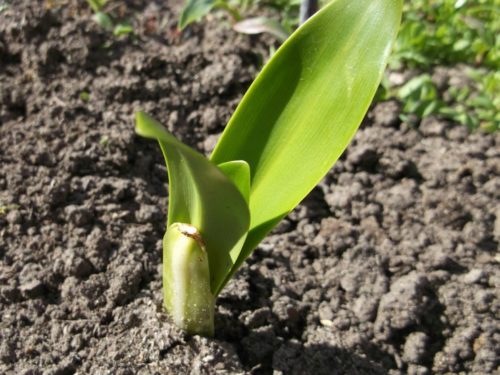
Himenokallis, plant care features
One of the main conditions for successful cultivation of the hymenocallese of the garden is to maintain the optimal humidity of the soil and the timely cleaning of bulbs for winter storage.
Consider key flower plant care rules.
Watering and hymenocalle
- Moderate regular watering is the main agrotechnical technique in the cultivation of Himenokalles.
- In summer, the plant is watered hard, especially during perennial flowering. In a very hot period, it is possible to spray the green mass of the hymenocallas.
- It is important to provide a plant such a rate of irrigation so that there is no re-fulfillment, no lack of moisture. Insufficient moisturizing leads to a slowdown in the vegetative development of hymenocallese and flowering delay. Excessive moisturizing provokes the rotting of the bulbs and the death of the plant.
- Under the root of Himenokallis do not watered, as water, falling on the root neck, can provoke the development of gray rot, destructive for the entire plant.
- Due to such a "capricious" ratio to moisture, experienced flower products are used to irrigation side grooves (10 cm from the flower), in which water poured (as drying it).
- By autumn, when the leaves begin to dying, the watering is completely stopped. At this time, rationally dip the plant to protect it from early autumn frosts.
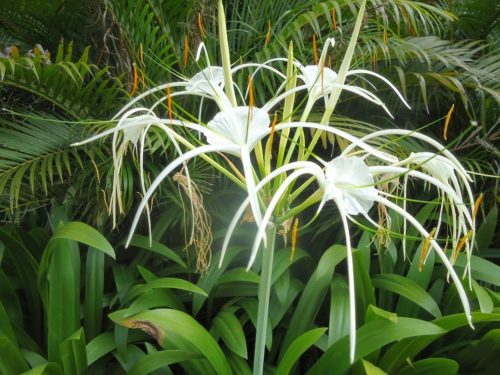
Making fertilizers and feeding of hymenochallis
- Fucking bulbous culture is also conducted as watering, during the period of active vegetation, until the end of the summer.
- The perennial needs additional feeding, due to the active and rapid increase in green mass.
- Supports with phosphorus, nitrogen and potassium content are suitable as complex mineral fertilizers. You can use special fertilizers intended for flowering plants. If one set of fertilizers is used - it is used throughout the season. If you take different fertilizers - then for the first 2 feeding it is better to use mixtures with a predominance of nitrogen and phosphorus, and for the latter - with potassium and phosphorus.
- Making mineral fertilizers are carried out 3-4 times per season. Moreover, the first time feeding is made during the landing of the bulbs, the last - at the end of summer.
- Fertilizers are best made to watering (side) grooves, after which they are slightly loose and watered with water.
- The organic should not be used as a feeding of bulbous crops.
Pests and diseases of Himenokallis
Himenokalleis is a plant resistant and pests, so it's extremely rare, and even then in the conditions of improper care for the perennial.
- Excessive moisturizing or prolonged moisture stagnation, in combination with organic fertilizers, can lead to a damage to the bulbs with brown softening stains. Special fungicides are used to combat the disease, normalize flower care conditions.
- At high temperatures and high humidity, the anthracnose plants are possible. In this case, dark spots with drips appear on the leaves. The fight against fungus includes a number of events: the affected leaves are cut and burned, the plant is treated with foundazole, irrigation rates setulate.
Preparation for winter and storage of hymenocullas
- Himenokalles does not winter in the open soil, its bulbs are subject to mandatory digging and storage until next spring.
- Separate amateur flower, on the eve of winter, practice transplantation of garden hymenocalleis into the room pot. So, the plant continues its development as room culture. If it is planned to use a perennial as a garden culture, it is better to provide him with a natural rest period.
- The bulbs of perennials dig out in the fall, in September-October, before the onset of frost. It is best to do this in dry warm weather.
- I dug the bulbs, they are placed in a dry cool room, so that faded leaves and cut-down flowerons dried and easily separated from the bulbs.
- After that, the bulbs are cleaned of dry residues, check for the presence of rot, dried (if necessary) at room temperature, separate children and laid for storage period.
- Store the bulbs of hymenocallese in a dry cool place (at a temperature of 10-15 0WITH). At lower temperatures, the bulbs may die.
- Store bulbs are best in boxes or drawers with dry sawdust, sand or peat.
- Some flower products before storage recommend the bulbs well rinse and thoroughly dry to the peeling effect of the peel. Then the hymenocalleis is stored as an ordinary bow, in the box, without speaking. Periodically, the bulbs turn over and check for dryness.
Genenokalles reproduction
The reproduction of hymenocallas is possible in vegetative and generative (seed) ways.
- Most often, hymenocalleis multiplies with subsidiaries. They begin to form on adult major bulbs, which are at least 4 years old. Children are separated and sorted in autumn when the uterine bulbs dig up and prepare for winter storage. Developing from subsidiaries of the plant bloom for 2-3 years after landing. Very small subsidiaries are not separated from the maternal, since they are not yet able to develop themselves. These miniature bulbs lined up on the flower will simply stop in development and die. It is important to let them grow a little and gain strength, continuing to eat at the expense of the main bulb.
- If the adult and developed hymenocully bulb forms a long time forms a daughter bulbs, it is divided into several (usually on 4) parts, which are planted into the ground. Before boarding, the bulbs are dry and treated with charcoal.
- The seed method of reproduction is a long and fairly laborious process. In this regard, it is rare in flower growing. Seeds are seeded in containers with nutrient soil with a mixture and care for seedlings, as for ordinary indoor plants. The depth of seed seedings is about 6-8 cm. Regular moisturizing, light, warmth and feeding - the main factors for the successful development of seedlings. Passionated young seedlings are picked by separate containers. When young Garden's Garden Plants are strong enough and "mature", they are transplanted to open ground. Plants bloom about the 5th year of life bloom.
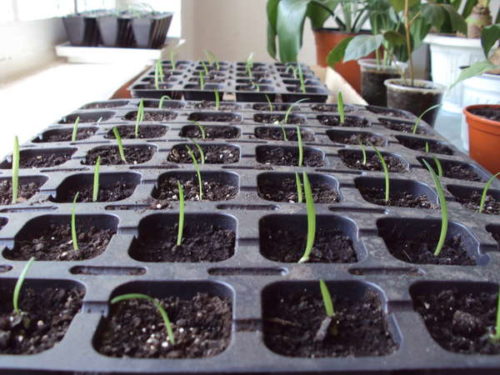
Difficulties in the cultivation of hymenocullas
Consider the most common problems of the flowerfields grown by hymenocallas in the garden or on the flower bed.
Why does Himenokalles do not bloom?
- If the hymenocallas is lacking moisture, the soil is prohibited and exhausted - the plant ceases to form a flowerca, foliage foliage, the bulbs are minced over time, the plant is poorly developing.
- Another reason why the hymenocallas is formed by flowers - the lack of rest in the plant.
- Weak lighting (shadow), the meager composition of the soil (the absence of any feeding), a sharp decrease in the temperature regime - also possible reasons for which hymenocalleis cannot bloom.
Why does Himenokallis disappear?
- One of the frequent reasons is the mooring of the soil, which caused the rotation of the Bulb of Himenokalles. The first signs of the convergence is the yellowing of foliage and softening the root cervix.
- Another reason is watering under the root when water constantly falls on the root neck, as a result of which she will swing and gets.
- The launched "non-treated" diseases of the bulbous culture can also cause the death of the plant.
Himenokallis is an unusual plant that makes the attention of the original and bizarre flower shape, which is based on a snow-white "bowl", surrounded by six elegant petals and crowned with long bright anthers. Flowerba with hymenochalles resembles "alien" plants attracting their beauty, charm and a wonderful aroma.
It is not difficult to grow on the site such a plant, but the capricious Lily will require special attention and knowledge. Given the peculiarities of tropical in origin, culture and performing the main agrotechnical requirements, any, even a beginner flower descender, will be able to grow hymenocalleis in its garden.

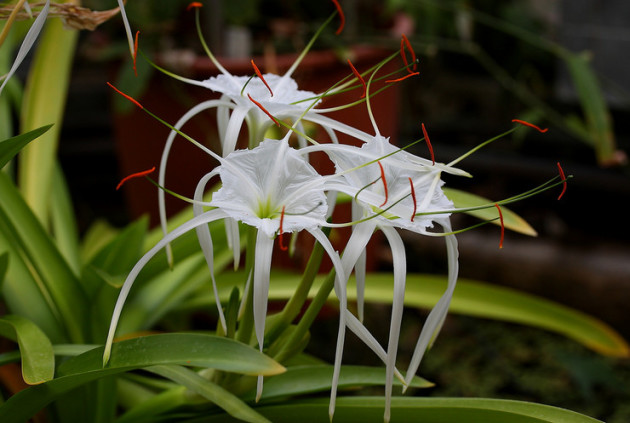
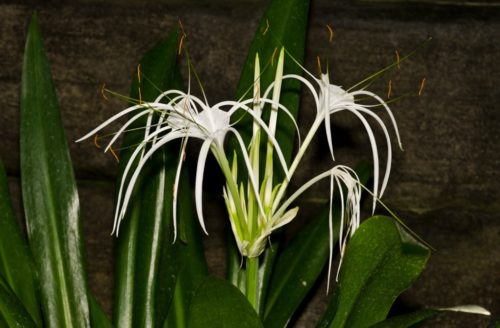
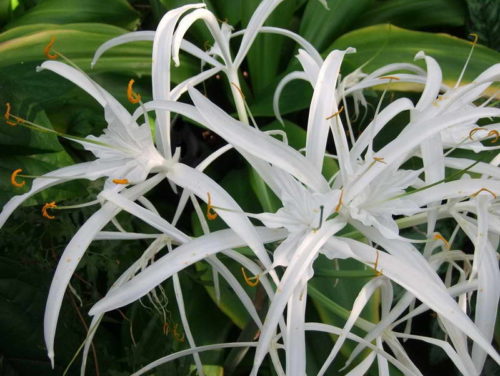
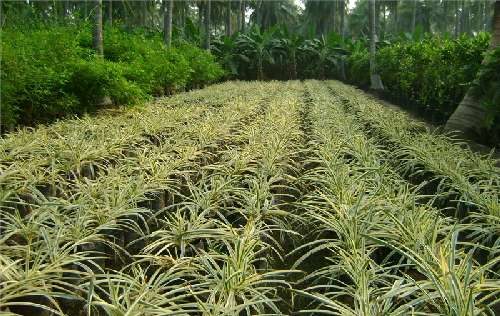
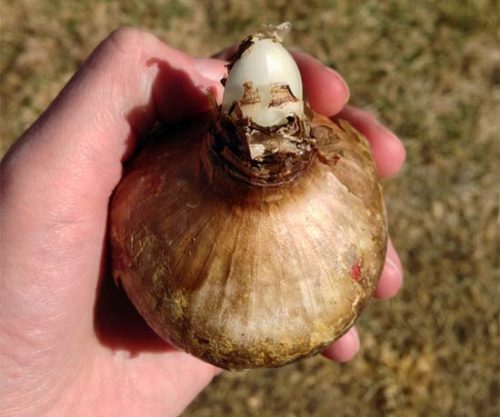
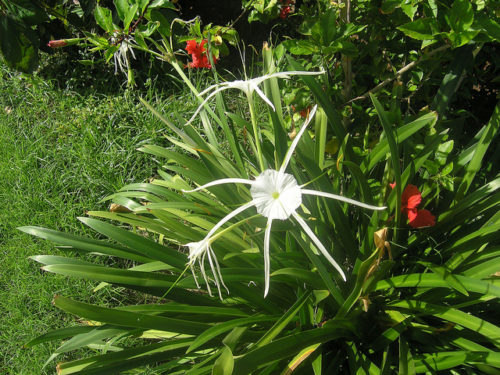
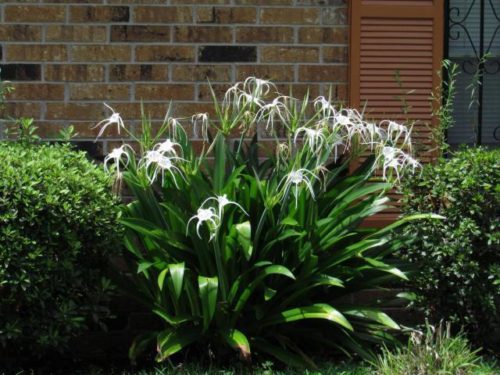
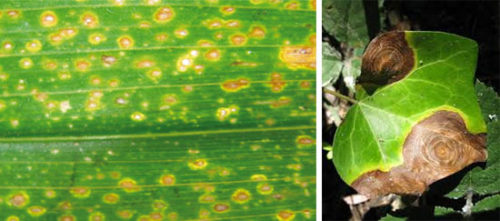
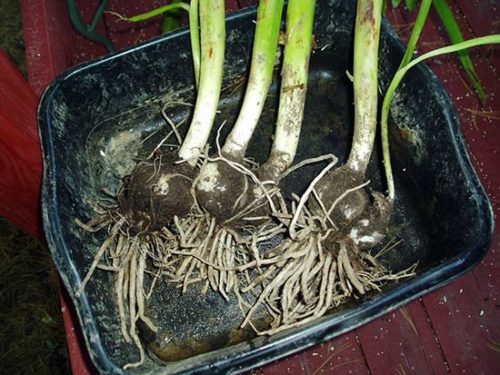
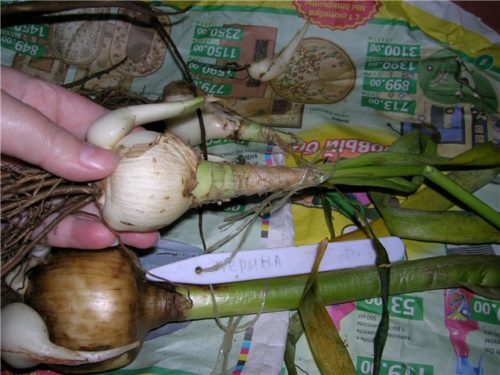
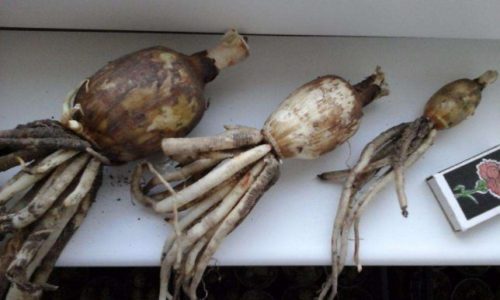
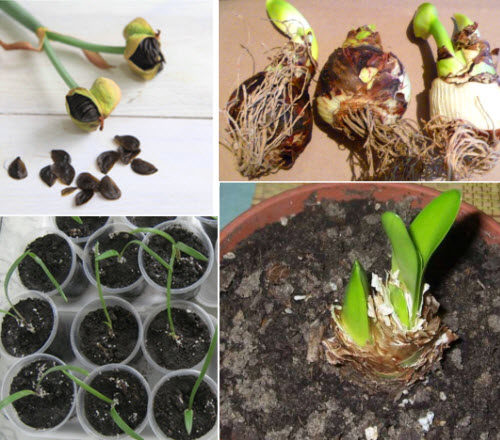
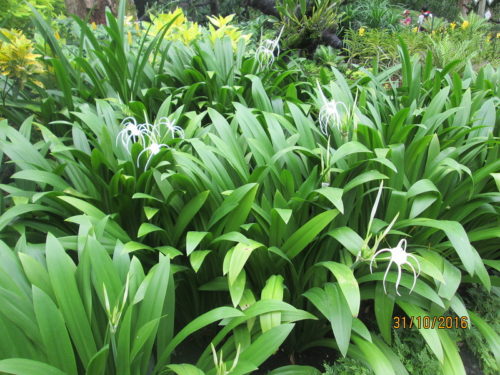
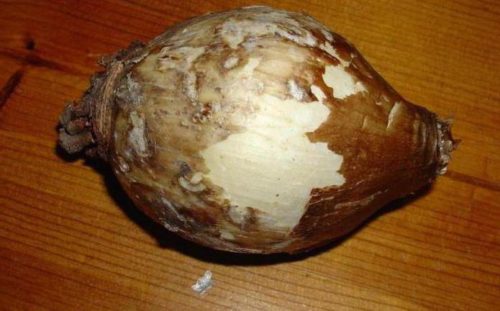
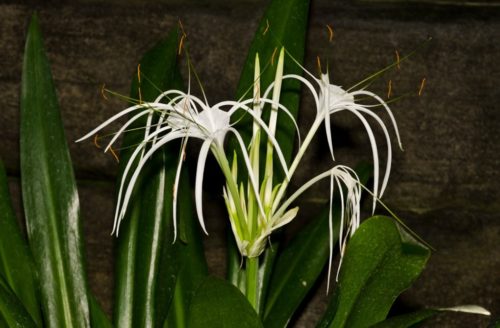
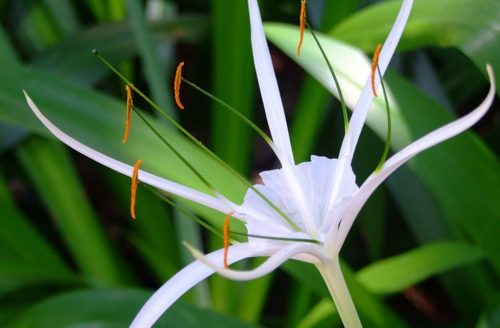
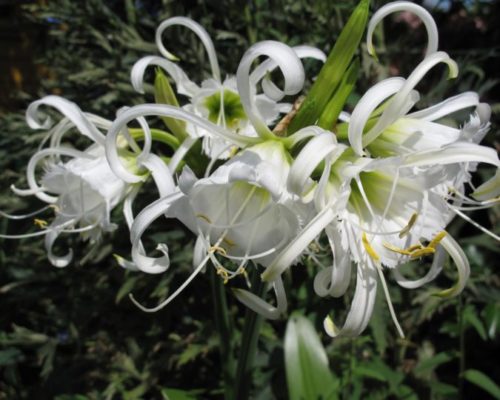
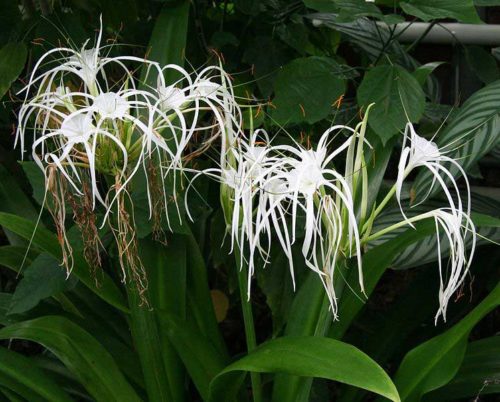
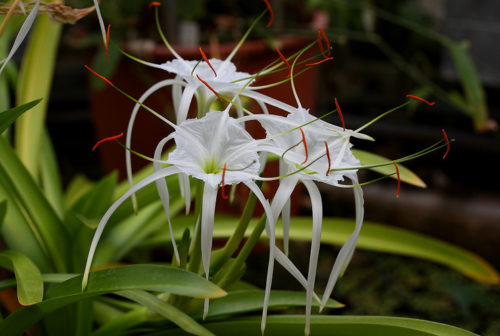
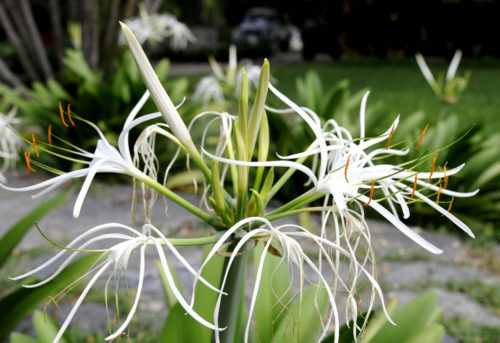

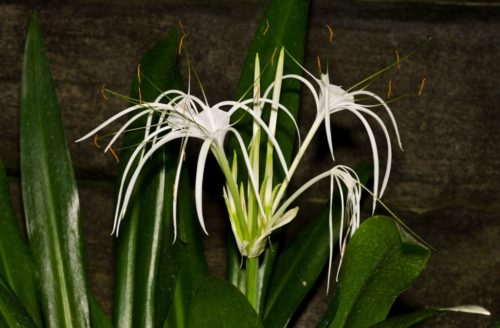
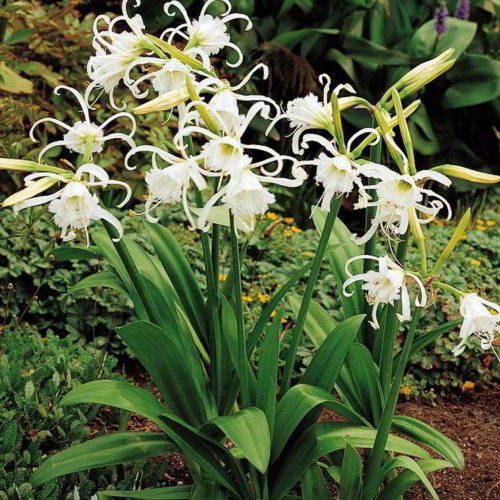
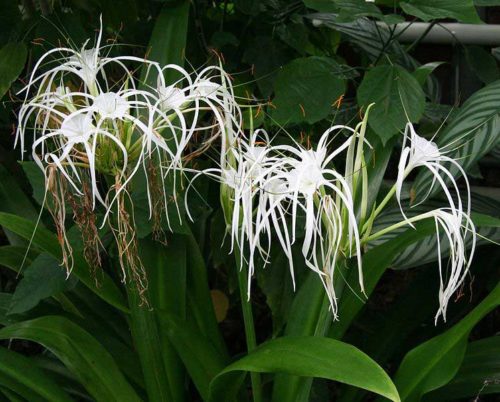
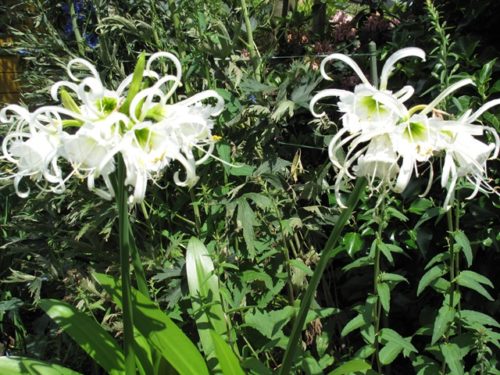












 Start a discussion ...
Start a discussion ...